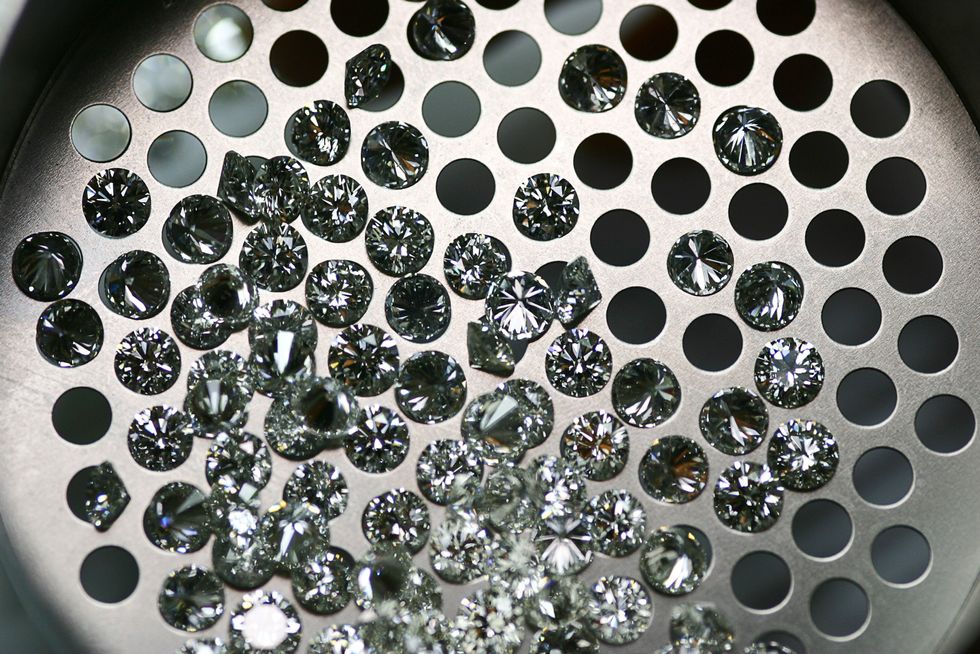Until recent times, speaking about diamonds one could mean just two aspects of their value – material and aesthetic ones. When the jewelers have succeeded in producing the first synthesized diamond, the situation is significantly changed adding to the diamond's value new third dimension - eco-friendly nature. Indeed, instead of celebrating the man-made diamond as a meaningful step towards 'responsible beauty', the global community cannot stop challenging this innovation and questioning its value.
So, we will try to participate in these hot debates and identify whether natural and lab-created diamonds are indeed different considering the mentioned dimensions of their value.
To start, we offer a small crash course about the term of "lab-created diamond". So, just from the title, everybody can guess that under "lab-created diamonds" we mean the gemstones grown by people in the laboratory conditions.
Indeed, only few can imagine these highly – technological and thoroughly controlled process enabling to synthesize diamonds with chemical and physical properties inherent to their natural prototypes. Because of this, we often perceive the lab-grown gemstones and diamond simulants as the same things prescribing them similar characteristics.
So, let's speak about the value
Considering the fact that the primary reason for wearing diamonds is their beauty, start with AESTHETIC ASPECT considering the optical effect, size, color, and clarity.
The primary outstanding feature of natural diamonds which have captured the human hearts is their special optical effect we used to call "shining". Could the lab-grown diamonds demonstrate this valuable feature? Yes! Being grown in the conditions very similar to the natural environment, manmade diamonds have the same chemical structure (carbon atoms) as the natural gemstones have and thus, exhibit the same shining effect.
For those who like a big and pompous diamonds, lab-created gemstones are true valuable finding. When the size of natural diamonds is a question of success (no one geologist would tell you whether you could find a huge diamond in a certain mine), lab –created diamond is a result of your offer.
The same can be said about clarity. Nature cannot produce the ideally clear diamonds containing any inclusions, while the laboratory process allows doing this.
What's about color, one can admit that man made diamonds are available in a variety of hues, including the saturated color could be rare met in nature.
Comparing the MATERIAL DIMENSION of the diamonds' value would not be so unambiguous aesthetic evaluation. Without any doubts, one can buy the lab-created diamonds on more than reasonable price and it is, maybe, a single comparative advantage of material value.
For those, who used to consider the diamonds an effective investment tool lab-created diamonds are not a good variant. Here several reasons.
First, the innovative product still has a high price and economists claim it would be decreased from year to year. So, your diamond will lose in price significantly in the long-term perspective.
The second: Although the laboratory-engineered gemstones have the same chemical characteristics, they are still less firm than a natural one. Consequently, it reduces the investment value of the lab diamonds.
Evidently, man made diamond is not identical to its natural counterpart but this fact should not bother you if you are not an investor. Nobody, except the jeweler armed with professional equipment, has no chances to fix the difference between natural and engineered diamonds so why you should pay more?If you are worrying about your self-awareness, which could obstruct the pleasure of wearing your gemstone, just count the last added ecological value and start to consider yourself a responsible consumer.
Ecological mission and responsibility cost more and is on trend today.
About me: independent blogger for MadeStones and diamond expert, contrasting unconscious consumerism and responsible consumption, challenging innovations in the area of fashion, trends, and jewelry.















